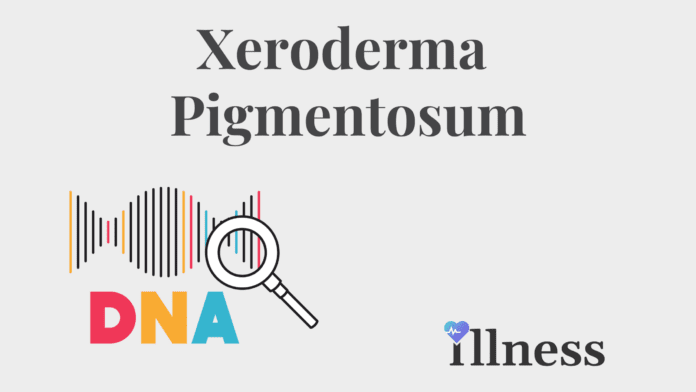Overview Of Xeroderma Pigmentosum
Xeroderma Pigmentosum, also referred to as XP, is a rare condition passed down through families. This hereditary condition causes the tissue and skin covering the eye to be extremely sensitive to ultraviolet (UV) light. Some people with XP may also develop nervous system problems.
Causes Of Xeroderma Pigmentosum
Being an autosomal recessive inherited disorder, XP develops when you have 2 copies of an abnormal gene. The disorder is inherited from both your father and mother at the same time. The abnormal gene is uncommon, so the chances of both parents having the gene are quite rare. For this reason, it is not likely for somebody with the condition to pass it on to the next generation, although it is possible.
Ultraviolet light, which can come from the sun, damages the genetic material in skin cells. Typically, the body repairs this damage. But in people with XP, the body will not. As a result, the skin becomes very thin and patches of varying color (splotchy pigmentation) appear.
Symptoms
Symptoms often appear by the time a child reaches 2 years old.
Skin symptoms include the following:
- Sunburn that does not heal after a small amount of sun exposure.
- Blistering after a little bit of sun exposure.
- Spider-like blood vessels beneath the skin.
- Patches of discolored skin that become worse, resembling severe aging.
- Crusting and scaling of the skin.
- Oozing raw skin surface.
- Discomfort when exposed to bright light (photophobia).
- Skin cancer at quite a young age (including melanoma, squamous cell carcinoma, and basal cell carcinoma).
Eye symptoms of XP include:
- Dryness of the eye.
- Clouding of the cornea.
- Ulcers of the cornea.
- Swelling or inflammation of the eyelids.
- Cancer of the eyelids, sclera, or cornea.
Neurological symptoms, which develop in some children, include:
- A loss of hearing.
- A delay in growth.
- Intellectual disability.
- Muscle weakness of the legs and arms.
Exams & Tests
The health care provider will perform a physical exam, paying close attention to the eyes and skin. In conjunction with the exam, the provider will also ask about a family history of XP.
Tests that may be done by the provider include:
- A skin biopsy in which the removed skin cells are studied in the laboratory.
- DNA testing for the problem gene.
The tests that follow can help diagnose the condition in a baby before birth:
- Chorionic villous sampling.
- Amniocentesis.
- Culture of amniotic cells.
Treatment Of Xeroderma Pigmentosum
People with XP need complete protection from sunlight. Even the sunlight coming through windows can be dangerous as well as any light coming from fluorescent bulbs. There is no current cure for XP.
Interventions for XP may include the following:
- When out in the sun, wearing protective clothing is mandatory.
- To protect the skin and eyes from sunlight, consider the following:
- Use sunscreen with the highest SPF available to you.
- Wear long-sleeved shirts and long pants.
- Wear sunglasses that block UVA and UVB rays. Inform your child to always wear sunglasses when outside.
- To reduce the risk of skin cancer, providers may prescribe medicines, such as protective retinoid creams, to apply to the skin.
- If skin cancer develops, surgery or other methods will be done to remove cancer.



